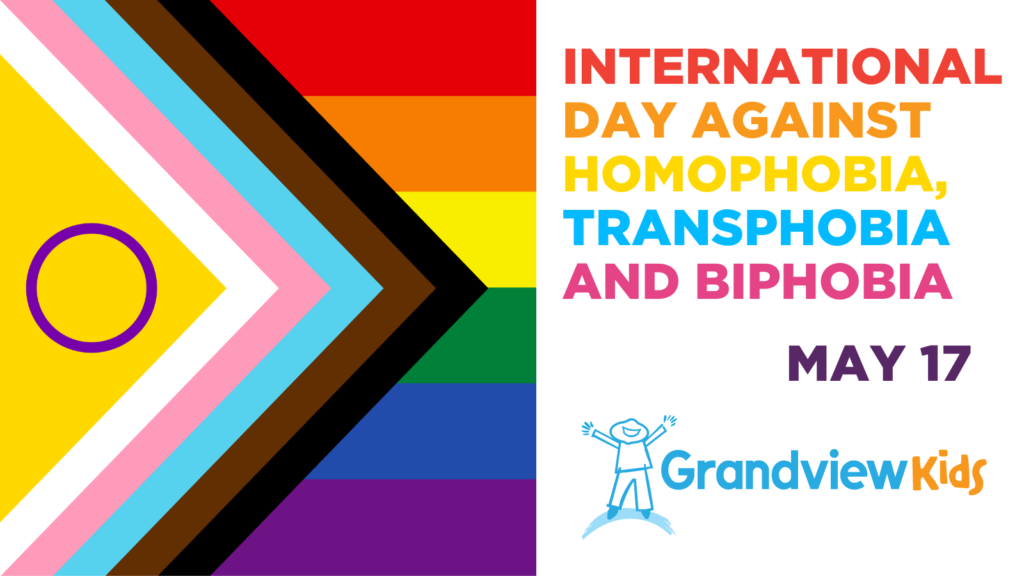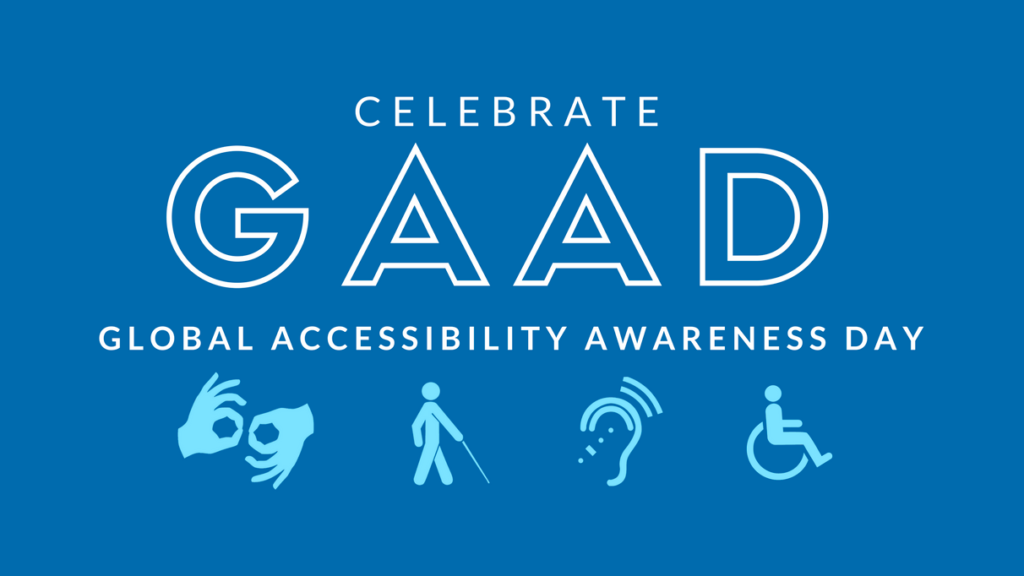In May, we acknowledge Mental Health Awareness Month, Asian Heritage Month, Neurofibromatosis Awareness Month, Food Allergy Awareness Month, Vision Health Month, National Child and Youth Mental Health Day, GBA (Gender Bias Analysis) Plus Awareness Week, World Lupus Day, Apraxia Awareness Day, International Day Against Homophobia, Transphobia & Biphobia, and Global Accessibility Awareness Day. Read more about each date of significance below, written by members of our Inclusivity, Diversity, Equity and Accessibility (IDEA) Committee.
Mental Health Awareness Month

May is Mental Health Awareness Month, and Mental Health Week is from May 6 to 12. Since 1951, the Canadian Mental Health Association (CMHA) has observed a week in May to continue building awareness and providing education about mental health within our communities.
For 2024, CMHA is focusing on kindness and compassion. Powerful tools to help ourselves and others connect and heal. Compassion is defined as an emotional response to the struggles of others combined with a real, authentic desire to help lessen their suffering*. While being kind and compassionate to others is healing to both those we emotionally want to support, there is also great benefit in self-compassion. The practice of self-compassion – CMHA-MHW2024.pdf
Benefits of kindness and compassion:
- It increases our “feel good” hormone, oxytocin.
- It is contagious; if we see others showing compassion or kindness, we are encouraged to do the same, and that helps us have a more positive outlook.
- It can also have a positive impact on our mood and help lift feelings of depression**.
Asian Heritage Month
May is Asian Heritage Month in Canada, recognizing the rich cultural tapestry and significant contributions of Asian communities to the nation’s history and development. This month serves as an opportunity to delve into the diverse heritage of Asian Canadians, spanning from their historical struggles against discrimination to their contemporary achievements across various spheres of society, such as arts, sports and social justice.
With the 2024 theme of “Preserving the Past, Embracing the Future: Amplifying Asian Canadian Legacy,” the focus extends beyond commemoration to embracing optimism and acknowledging the ongoing journey towards inclusivity and equality. Through celebrating traditional and contemporary cultural expressions and understanding the historical struggles and triumphs of Asian Canadians, Asian Heritage Month invites Canadians to reflect on their integral role in shaping the fabric of Canadian society.
Neurofibromatosis Awareness Month
May is Neurofibromatosis Awareness Month, and May 17 is Neurofibromatosis Awareness Day. Our Peer Navigator, Fadia O., wanted to pay tribute to her friend’s son Hamza by sharing his story. He has been battling Neurofibromatosis type 1 (NF1) since birth, and I want to bring awareness to this condition, which profoundly impacts him and his family and those who have this rare disorder. NF1 is a neurological and genetic disorder which appears as light brown café au lait spots, freckles in the armpits or groin, tiny eye iris bumps, and soft skin or underskin tumours. While these tumours are generally benign, NF1 can also cause abnormal bone growth, leading to conditions like scoliosis or bowlegs, as well as optic nerve tumours. Children with NF1 often experience unique learning challenges, and may have a larger head size and shorter stature compared to their peers.
Witnessing Hamza’s journey, who has nerve tumours, bone anomalies, declining health and now a dependency on breathing machines for the past four months, has deeply moved me. Surrounded by his worried yet hopeful family, he shows immense bravery. NF1 can lead to complications such as hearing loss, cognitive difficulties, cardiovascular issues, vision impairment, and intense pain, all of which this courageous young man is enduring.
This story is shared not only to raise awareness but also to honour the hope and spirit of Hamza, his family, and the many others living with NF1. It highlights the urgent need for advanced research, comprehensive understanding, and robust support systems for those navigating the complexities of this condition. Amidst these struggles, hope keeps them driven toward finding a future where scientific breakthroughs and new possibilities await every family, including Hamza’s.
Food Allergy Awareness Month
May is Food Allergy Awareness Month, and this is an issue that impacts nearly one in two Canadian households. Food allergy is one of the leading causes of potentially life-threatening anaphylactic reactions and a public health concern in Canada, especially among children.
Over 3 million Canadians are affected by food allergies; that’s 7.5% of the population. The impact of food allergy is far greater, with an estimated 50% of households being either directly or indirectly affected by food allergy. As there is no way of predicting how severe an allergic reaction may be and no known cure for food allergy, avoiding allergenic food is required to prevent a reaction.
Vision Health Month
Vision Health Month is an invaluable opportunity to raise awareness about the importance of eye health and vision care. Throughout this month, professionals aim to educate individuals about the significance of regular eye exams, early detection of eye conditions, and the adoption of healthy habits to preserve vision. With millions of people worldwide affected by preventable vision impairment, Vision Health Month serves as a crucial reminder to prioritize our eye health and take proactive steps to safeguard our vision for a lifetime of clarity and well-being.
1 in 7 Canadians develop serious eye disease in their lifetime, and the Canadian Association of Optometrists advocates that 75% of vision loss is preventable or treatable with proper care. Through advocacy, outreach, and community engagement, Vision Health Month strives to empower individuals to make informed choices about their eye health and inspire action toward a world where everyone has access to quality eye care.
May 7: National Child and Youth Mental Health Day
The purpose of National Child and Youth Mental Health Day is to foster connections between young people and the adults in their lives who care about them. Caring, connected and supportive conversations can have a big positive impact on mental health and the well-being of children.
There is no greater cause than helping a child and saving them from suffering alone. This can protect them from living with any long-lasting crippling mental conditions. A mental health check is important for everyone, not just children. Some conditions can ruin the quality of life if not treated early. Have meaningful conversations with the youth in your life surrounding ways to support their mental health better and create an open and honest dialogue. By celebrating this day, we are effectively raising awareness to make more people undergo treatment. The general support for children will also increase.
May 6-10: GBA (Gender Bias Analysis) Plus Awareness Week
GBA Plus Awareness Week was first launched in 2012 to increase understanding among federal public servants of the relevance of GBA Plus to their work. The Government of Canada defines the term “gender-based analysis plus” as “an analytical process used to assess how diverse groups of women, men and people of all genders may experience policies, programs and initiatives. The “plus” acknowledges that GBA goes beyond biological (sex) and socio-cultural (gender) differences. We all have multiple identity factors that intersect to make us who we are; GBA+ considers many other identity factors, like race, ethnicity, religion, age and mental or physical disability.”
The theme for this year is “Intersectionality in Action: Moving Forward on an Enhanced Approach to GBA Plus.” This supports the process of advancing equality and inclusion for everyone in Canada. Events throughout GBA Plus Awareness Week help develop and support inclusive and responsive policies, programs, services, and decision-making that affect the well-being of all Canadians.
May 10: World Lupus Day
Lupus is a serious, life-altering, and fatal disease that requires in-depth understanding and support for the affected persons. Lupus is an inflammatory disease/autoimmune disease that occurs when the body system attacks its own tissues and organs. Inflammation resulting from this may affect various body organs, including the skin, kidneys, brain, blood cells, lungs, heart and joints. To help raise awareness about lupus, you might consider wearing purple and sharing lupus facts on social media. One interesting fact is that while anyone can develop lupus, 90% of people with lupus are women.
The World Lupus Federation encourages people to share the ‘Lupus Awareness Toolkit’, which includes more specific ways to spread awareness. Some of these are:
Awareness and Advocacy:
- Contact local officially to ask them to light up a landmark, monument or building the colour purple (the colour supporting Lupus Awareness Day)
Media Tools:
- Share stories and raise the national profile of Lupus by posting on social media
Government Proclamation:
- Reach out to government officials to raise awareness of important priorities surrounding Lupus, such as the need for improved patient care.
Signs and Symptoms:
- Understanding the common signs and symptoms of Lupus is critical to raising awareness. For more information, refer to the list of symptoms and risk factors on the World Lupus website.
May 14: Apraxia Awareness Day

Childhood Apraxia of Speech (CAS) is a rare but severe motor speech disorder that affects less than 1% of children. Children with Apraxia often have difficulty speaking because they have challenges learning or carrying out the complex sequenced movements necessary for intelligible speech (e.g., moving their jaw, lips, or tongue). This is a day to spread awareness of what this disorder means and how Speech-Language pathologists can best support the child and family with appropriate early intervention!
Children with CAS may also require multidisciplinary support, not only for their speech challenges but their fine and gross motor movement. Frequent therapy, along with providing ways to communicate while learning to speak clearly (e.g., Alternative and Augmentative Communication), are helpful tools to support our clients and their families. Every child deserves a voice! Visit Apraxia Awareness Day – Childhood Apraxia of Speech for more information.
May 17: International Day Against Homophobia, Transphobia & Biphobia

The International Day Against Homophobia, Transphobia and Biphobia holds significant importance as a global initiative established in 2004 to spotlight the pervasive violence and discrimination endured by individuals across diverse sexual orientations, gender identities and expressions, as well as sex characteristics. Managed collaboratively by various regional and thematic networks, the day is observed in over 130 countries, despite prevailing legal barriers in many. Its recognition extends from grassroots initiatives to official endorsements by states, international bodies like the European Parliament and numerous local authorities. This year’s theme, “Together Always: United in Diversity,” underscores the collective effort to combat discrimination and promote inclusivity. The selection of May 17th commemorates the World Health Organization’s (WHO) landmark decision in 1990 to remove homosexuality from its list of mental disorders, symbolizing a global call to action for policymakers, media, corporations and society at large to confront the challenges faced by marginalized communities.
Visit May17.org to learn more.
May 18: Global Accessibility Awareness Day

The third Thursday in May each year marks Global Accessibility Awareness Day, which falls on May 18 this year. Created in California in 2011 by a web developer, the awareness day quickly grew in popularity and was formally recognized by the technology sector a year later. This awareness day provides the opportunity to recognize the importance of increasing the use of accessible features in technology, particularly implementing accessible features into websites and computer programs.
Here in Ontario, companies are required by law through the Accessibility for Ontarians With Disabilities Act to ensure that their websites and social media accounts align with the requirements set out by the AODA. If you are interested in learning more about how to make your social media more accessible, then be sure to check out this video for some tips and tricks. – https://youtu.be/MKTpDOccHzg?si=nGpG9BfR2mfBWBEY
Check out more Grandview Kids articles
- Team Grandview achieves Accreditation with Exemplary Standing, receiving a perfect score
- “Grandview Kids became my life raft” – International Day for People with Disabilities
- December: Dates of Significance
- From the search for support to finding a village: Celebrating Giving Tuesday
- Scarlett sparkles with hope in every step: Grandview Kids 2025 Holiday Campaign
